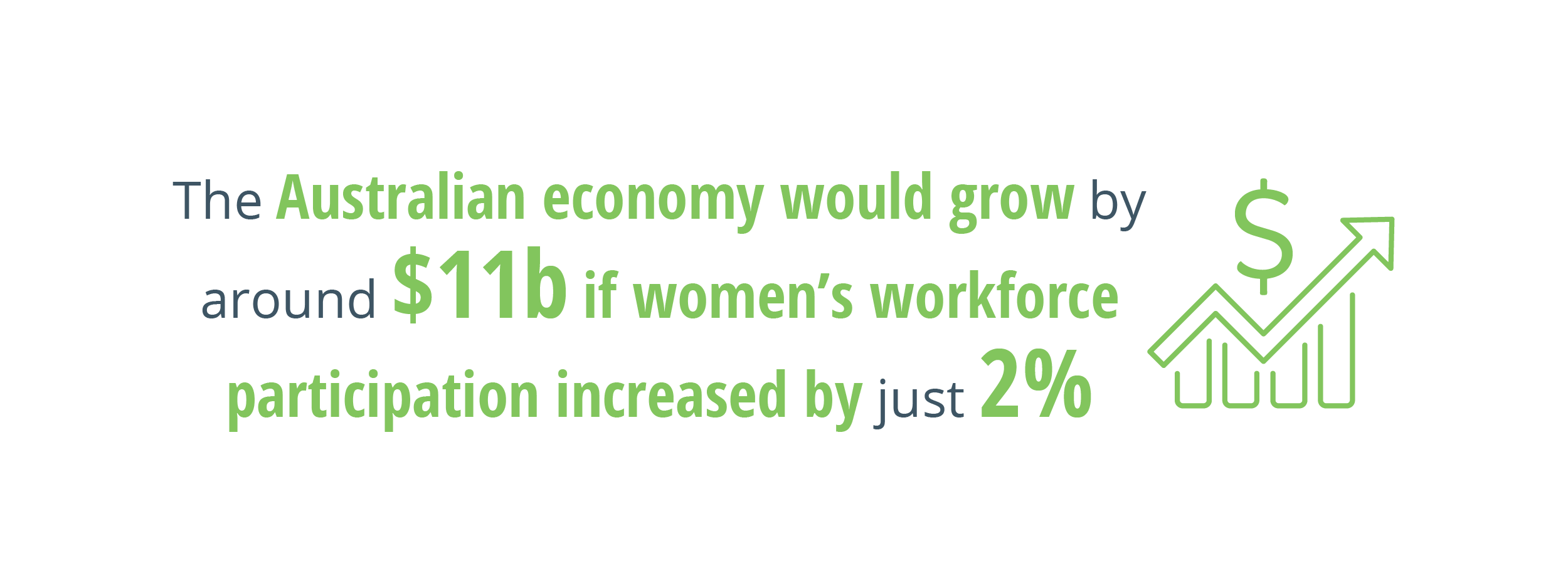Addressing workforce participation disincentives
Making the most of the workforce we have available is more important than ever.
While there are many ways Governments can bolster the capacity of their workforces, the most exciting opportunity is to make it easier for women with young children to re-enter the workforce and work more hours.
For WA, the scope for gains is enormous.
The gap between men’s and women’s workforce participation here is the highest in the country, and WA mothers work less than elsewhere.
Economic opportunities are being left on the table
Economic opportunities are lost when we draw less on the talents, experience and drive of working women. For women in managerial roles, the losses are compounded, since the economy loses their contribution themselves and the extra output they generate from their teams.
Making it easier for mothers to work would benefit these individuals and their families and deliver our economy a competitive advantage.
What are the barriers to women participating in the workforce more?
There are several barriers to women working more after they have children:
- The tax and transfer system creates financial disincentives to work more than three days a week.
- Unpaid work at home is not shared equally between parents.
- There can be challenges accessing early childhood education and care.

In WA, the way the State Government allocates funding for kindy means that childcare centres cannot offer free kindy programs.
This has decreased the availability and increased the cost of kindy programs in WA childcare centres, with many parents having to use their local school’s kindy services.
Parents are denied the choice of having education and care for their young children in one place.
Addressing the barriers to women’s workforce participation
We’ve identified steps the State Government can take that won’t cost the budget.
Our key reform proposal is to allow state government funding for kindy to ‘follow the child’, regardless of whether the child attends kindy at school or a childcare centre.
This is what happens in New South Wales, Queensland, Victoria, South Australia, the Northern Territory and the ACT, and is like the way aged care and disability markets work.
Key recommendations to the State Government:
- Establish a working group to address barriers to WA women’s workforce participation.
- Change the way it allocates Universal Access National Partnership funding so that funding follows the child.
- Align the minimum requirements for WA’s staff-to-child ratios with the National Quality Framework.
Key recommendations to the Commonwealth Government:
- Look seriously at the tax and transfer system, which creates disincentives for second income earners across the country to work more than three days a week.
- Exempt all types of early childhood education and care from Fringe Benefits Tax.
Promoting organisational change
For our part, CCIWA is helping to drive change in business culture in WA by supporting organisations to create cultures that encourage dads to spend more time raising their young children, therefore making work easier for mums.
Our report includes tips to help businesses:
-
- Recognise the value proposition of increased workplace flexibility
- Know where they are and where they want to be
- Identify the barriers to change
- Champion change



















